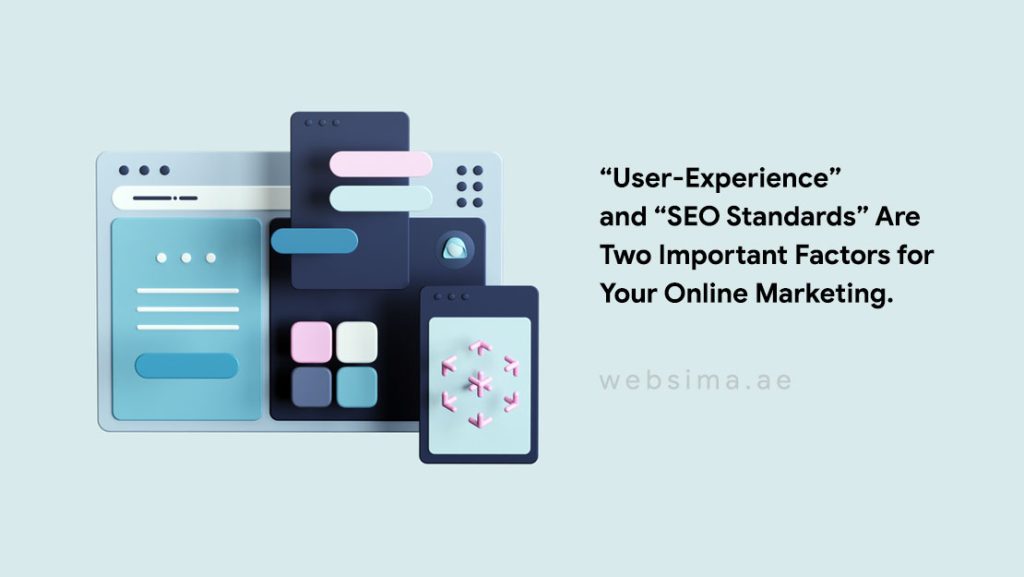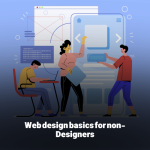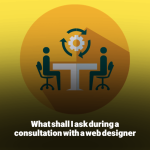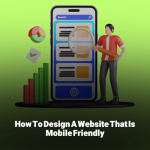Website Design Services, from Scratch to Hatch
People falsely think that creating a website is only about designing and coding. However, the website creation process includes more steps which are detailed below. Whether you want to have a simple website, a corporate website or an e-commerce website you should be aware of these steps:
Web-design services in Websima style
Here at Websima, we go through 7 steps for creating a website in which, designing and coding are only 2 out of 7!
If you consider a professional website like a human body, coding acts like the brain and designing acts like the heart. Even though the brain and heart play a crucial role for a human body, the other parts are as important as these two.
We will be discussing the 7 steps of creating a website in the following article in detail and assure you that once you read through this article, your image about creating a new website will be changed.
1.Understanding the project and its purposes
To investigate and define a target is the first step to create a website. To do so, we will ask different questions and put the required information together.

In the first free-of-charge consultation meeting, as the first contact with the customer, we will try to understand the purpose of the website and get some deeper vision into your business. Some of the most important questions to be asked are as below:
- What is your main purpose of building the website?
- What are the important products and services that you are willing to offer in your website?
- What is your target segment?
- What do you like your visitors to do on your website and how do you want them to contact you?
- What are your main differences and advantages in comparison with other competitors?
- Have you ever had a website before?
Choosing a destination is the first step of any path. The process of choosing a path would be meaningless, if we don’t know where we are heading to!
By ignoring this step, we would most probably go in the wrong direction leading to failure.
2.Writing a Proposal as a Project Executive Plan
After the first meeting and understanding the customer’s purpose and needs, we will have some internal meetings trying to gather ideas and suggestions to make the proposal as good as possible.
By investigating all the suggestions and analysing the customer’s competitors, the project manager designs a standard structure with practical features for the website and presents it in the proposal in detail for later reference.

At last, by considering the features and graphical design of the website, we will add an accurate timeline and cost estimation to the proposal, as an accurate proposal should precisely outline the design and timeline boundaries of a project.
Ignoring this step leads us to have conflicts with the customer through the next steps. Our experience shows that spending more time and effort on making the proposal, will increase our chance to succeed and satisfy our customers in the future.

3.Visual Identity & Content Priority
In the previous two steps, the whole structure and important pages of the website were identified and confirmed by the customer. Next step will be the determination and confirmation of visual elements by the customer, to be applied to the visual design and contents.
Websima design team will present two graphical plans after having meetings with customers as outlined below:
1.Visual Identity (Mood Board)
It’s the process of choosing the main colour, complementary colours, fonts and sizes. This sub-step would structure the visual identity of a website. By confirming it at the initial steps, edits and changes will be avoided in the future as we progress forward.
The image below shows a “Mood Board” of a real project designed by Websima:

2.Content Priority (Art Board)
In this document, we will present the structure of the contents and elements of the homepage. By using the “Design Content-First” method, we try to give priority to the “User Experience” and “Content Accessibility”. The image below is a small part of the “Art Board” for the same project:

These two documents with further details will be sent to the customer in order to receive his feedback, required edits and final confirmation. Once confirmed, the graphical design process for homepage and inner pages will be started.
4.Graphical Design of the Homepage and Inner-Pages
Homepage graphical design is the most attractive part of the whole project. We can assure you that the most important advantage of Webisma is our creativity and ability to create an impressive design for your website.
There would be no complexity and challenge at this stage due to the “Mood Board” & “Art Board” we have available already. By adding just a little bit of creativity and considering the details, an attractive outcome will be in our hand.
Web-design is quite different from designing a billboard, a catalogue or a flyer. In the process of designing a website, we should be considering a variety of elements such as User-Experience, mobile version, coding limitations, loading speed and low volume. These elements are critical to have a successful project at the end.
Moving forward to the next step, the final outcome will be saved and sent as an image file to the customer. At this stage, customer’s points, feedback and required edits if any, will be received and applied. It is possible that the graphical design gets the customer confirmation after the first sketch is issued, or it may need more back and forth communication for it to be finalised.
Once the final confirmed design is in our hand, the design team starts to sketch the inner-pages accordingly. Meanwhile, the coding team starts their work on the homepage and management platform.

5.Coding the Website Considering the SEO Standards
Building a website wouldn’t guarantee your success in this market. Given the fact that “User-Experience” and “SEO Standards” are two important factors for your online marketing, you will not be able to convert your visitors to customers without being compliant with them.
At this stage, personas and user-experience have been fully considered. Going forward, our technical team will now be working on the coding to apply all the factors we have put together so far. The final outcome of this stage should be fully in line with the graphical design and also the SEO standards will be applied as well. Below, you may see some SEO standards which will be applied:
- Applying correct HTML tags
- Responsive design
- Fast loading and high speed of the pages
You can check “SEO Services” for more information
6.Test and Quality Check
Once designing and coding is completed, it is time for a performance test, before presenting to the customer. Websima team will check the website on desktop computers and mobile phones. Also, we will check the process of publishing some products and articles to spot any possible problems on the website.

At last, the website trial version will be uploaded into a temporary domain for the final checks and debugging along with giving an access to the customer for his final review and feedback.
7.Training and Moving to the Domain
At the final stage, the customer not only sees the result, but also will be attending a meeting with our team to be trained on how to work with his website modules, features and management panel. On top of that, we will provide a training video for his later reference. All our customers will have an adequate amount of time to work with their website, check all modules and features as well as the management panel. They also will be in contact with our team to sort out technical issues if any.
Once the customer is happy with everything in his website, we will move the website up into the main domain, as per his official request, within 24 hours considering the security regulation and SEO standards. However, this is not the end of our cooperation with the customer as we will be in contact for 3 month support period, free of charge, to support and fix any issue you may face with your website. On top of that, Websima will be supporting your website security during the first year and can be extended if requested by the customer.
Discipline is the key for a successful website design
During the journey of creating a website from the very first day of meeting with the customer until the website is up and running, the integrity between all steps is very important. Hence, all our project team members will have comprehensive information about the previous steps in order to move the project forward in the right direction.
Please have a look at the “our portfolio” section to have a better understanding of our high-quality outcome.





